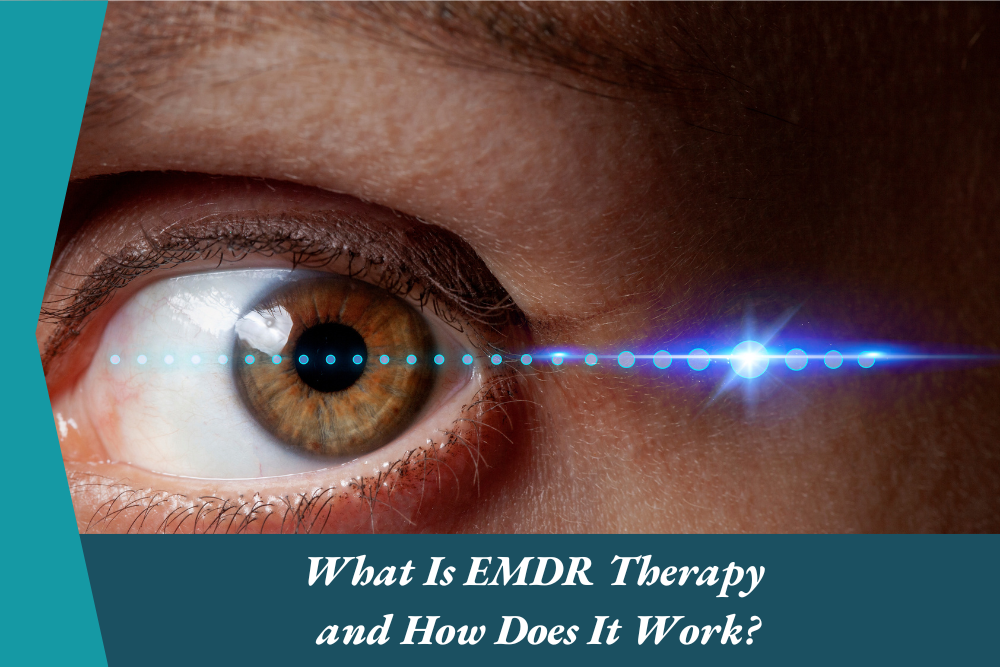Best emdr therapy in nyc creates opportunities toward healing
The Refine of EMDR Therapy: a Comprehensive Guide to Its Methods and Benefits
EMDR treatment stands out as a structured method for resolving traumatic memories. Its multi-phase approach and incorporation of reciprocal excitement methods set it besides conventional treatments. By helping with the reprocessing of upsetting experiences, EMDR provides a distinct pathway to healing. What specific techniques are employed, and what benefits do they offer trauma recuperation? Discovering these facets reveals a much deeper understanding of this reliable therapeutic option.
Comprehending EMDR Treatment: A Review
EMDR therapy, or Eye Movement Desensitization and Reprocessing, is a psychiatric therapy technique created to relieve the distress connected with stressful memories. Established by Francine Shapiro in the late 1980s, EMDR incorporates aspects from various healing modalities, including cognitive-behavioral treatment and psychodynamic treatment. The primary objective of EMDR is to assist individuals procedure and reframe terrible memories, reducing their psychological charge and linked signs.
During EMDR sessions, clients participate in double interest stimuli, typically entailing assisted eye motions, while remembering stressful memories - emdr therapy new york city. This process enables the mind to reprocess the memory in a much healthier fashion. EMDR has actually gotten recognition for its effectiveness in treating Anxiety, ptsd, and anxiety, to name a few conditions. Research has actually shown that EMDR can result in substantial renovations in emotional wellness. As an organized intervention, it uses a comprehensive structure for specialists to help customers in getting over the impact of previous injuries
The 8 Stages of EMDR
While numerous healing methods differ in framework and technique, the 8 phases of EMDR supply a systematic framework that overviews the healing procedure. These stages begin with the history-taking and treatment preparation, where the therapist gathers relevant information concerning the customer's experiences and establishes a risk-free setting. The second stage focuses on preparation, gearing up clients with tools to take care of emotional distress.
In the 3rd stage, clients determine particular memories to target. The fourth stage entails desensitization, where customers refine these memories while participating in reciprocal stimulation. The 5th stage emphasizes installation, strengthening favorable ideas. The 6th stage addresses body scan strategies to identify any kind of recurring stress.
The last 2 stages include closure, returning clients to a state of stability, and reevaluation, evaluating the effectiveness of the treatment. This organized technique assurances that EMDR therapy is detailed, resolving both the physical and mental facets of injury.
Trick Techniques Made Use Of in EMDR Sessions
In EMDR sessions, specialists make use of particular strategies to facilitate healing and handling of terrible memories. Secret amongst these are reciprocal stimulation techniques, which involve both hemispheres of the brain, and numerous memory processing techniques that aid clients reframe their experiences. Recognizing these techniques is necessary for understanding the effectiveness of EMDR therapy.
Bilateral Stimulation Methods
Bilateral stimulation approaches are essential strategies used throughout EMDR sessions to promote the processing of stressful memories. These methods include engaging both hemispheres of the brain, advertising integration and recovery. Typical bilateral excitement techniques include acoustic hints, such as alternating tones or sounds, and tactile stimulation, with making use of handheld tools that create alternating taps. Visual stimulations, such as the therapist assisting the customer's eye activities back and forth, are likewise commonly made use of. The rhythmic nature of these strategies assists to activate the brain's all-natural processing capacities, enabling clients to recycle distressing memories in a secure environment. Ultimately, reciprocal stimulation fosters a feeling of security and improves the restorative experience during EMDR.
Memory Handling Techniques
Memory handling strategies in EMDR sessions are pivotal for aiding clients confront and rework terrible experiences. These methods concentrate on facilitating the reprocessing of upsetting memories, enabling clients to incorporate and resolve negative emotions associated with them. One trick method entails making use of bilateral stimulation, which can include responsive experiences or acoustic tones, to enhance the brain's details handling capacities. Throughout sessions, clients are guided to recall specific memories while concurrently participating in bilateral stimulation, promoting a dual emphasis on the stressful memory and the existing minute. This approach help in minimizing the emotional charge of the memory, making it less invasive. Eventually, memory processing techniques encourage clients to reconstruct their stories, cultivating healing and resilience.
The Duty of Reciprocal Stimulation
Reciprocal stimulation is a fundamental part of EMDR treatment, assisting in the processing of traumatic memories. Numerous strategies, such as auditory, tactile, and aesthetic stimulation, are used to engage both hemispheres of the mind. This technique has been revealed to enhance injury healing by advertising psychological policy and reducing distress related to previous experiences.
Device of Reciprocal Stimulation
The device of reciprocal excitement plays a vital function in assisting in the processing of terrible memories when people engage in EMDR treatment. This strategy involves rotating excitement, usually with auditory, responsive, or visual methods, which triggers both hemispheres of the brain. The rhythmic nature of bilateral stimulation is assumed to simulate the brain's natural processing mechanisms during rapid eye movement, promoting combination of traumatic memories. As customers focus on their traumatic experiences while at the same time taking part in this excitement, they might experience a decrease in emotional charge linked with those memories. This procedure permits for the reprocessing of trauma, leading to improved psychological guideline and a much more adaptive point of view on previous occasions.
Kinds Of Excitement Strategies
Numerous stimulation techniques are made use of in EMDR therapy to enhance the reprocessing of terrible memories. The main approach is bilateral excitement, which includes auditory, visual, and tactile techniques. Auditory excitement commonly includes alternating sounds played through headphones, while aesthetic excitement can consist of directed eye movements back and forth. Responsive stimulation might make use of handheld gadgets that produce alternating taps on the client's hands. Each of these strategies intends to engage both hemispheres of the mind, assisting in a much more reliable handling of traumatic memories. Practitioners may choose one or a mix of these techniques based upon customer choices and healing objectives, guaranteeing a tailored method to recovery. These techniques are vital for advertising a much deeper integration of traumatic experiences within the restorative structure.
Benefits for Trauma Healing
The duty of reciprocal stimulation in EMDR treatment substantially contributes to injury recuperation by facilitating the processing of distressing memories. This strategy entails alternating sensory input, usually with eye movements or right here acoustic tones, which assists in incorporating terrible experiences. By engaging both hemispheres of the mind, bilateral excitement boosts emotional guideline and lowers the strength of traumatic memories. Study suggests that customers often experience a decrease in anxiousness and an increased ability to confront distressing thoughts. Additionally, this method promotes cognitive adaptability, permitting individuals to reframe their experiences in a much more flexible manner. Inevitably, using bilateral excitement in EMDR therapy plays a necessary function in allowing individuals to accomplish enduring healing and durability when faced with trauma.
The Science Behind EMDR: Just How It Works
The exact devices of Eye Motion Desensitization and Reprocessing (EMDR) treatment are still being checked out, research recommends that it promotes the processing of traumatic memories by incorporating sensory, psychological, and cognitive elements. EMDR employs bilateral stimulation, usually with guided eye movements, which is thought to resemble the mind's natural processing throughout rapid eye movement. This excitement may help clients accessibility and recycle upsetting memories, reducing their psychological fee.
Neuroscientific researches show that EMDR may modify the method terrible memories are saved in the mind, promoting flexible resolution. The therapy encourages people to face their memories and associated ideas, enabling them to reframe their experiences. On top of that, the structured stages of EMDR-- such as desensitization, history-taking, and installment-- sustain a detailed expedition of the trauma, cultivating combination of the fragmented aspects of the memory. This procedure ultimately intends to restore a feeling of equilibrium and psychological well-being.
Advantages of EMDR for Injury Healing
EMDR treatment offers many advantages for people recuperating from injury, particularly by resolving the cognitive and emotional distortions linked with stressful experiences. One substantial advantage is its capacity to facilitate fast handling of upsetting memories, often causing a reduction in signs and symptoms such as anxiety and depression. This method permits customers to confront their trauma in a structured and safe atmosphere, promoting strength and psychological regulation.
Furthermore, EMDR assists people reframe negative beliefs associated to their injury, advertising a much healthier self-image and restoring a sense of control. The therapy can improve general mental well-being and encourage customers to regain their lives, making it a valuable device in trauma recuperation. look these up Furthermore, EMDR appropriates for various age and can be adapted to meet the specific needs of individuals, making it a versatile choice for those looking for to recover from their distressing experiences efficiently.
Who Can Gain From EMDR Treatment?
People from varied backgrounds and experiences can take advantage of EMDR treatment, specifically those that have encountered trauma in various kinds. This includes survivors of childhood abuse, all-natural catastrophes, accidents, and combat experiences. In addition, people dealing with trauma (PTSD) commonly discover EMDR to be an efficient treatment choice.
Beyond trauma, those managing stress and anxiety, depression, anxieties, and other psychological health and wellness conditions might also experience renovations through EMDR. The treatment can help in dealing with traumatic memories that add to these concerns.
EMDR is not restricted to grownups; teens and kids can also benefit, specifically when adapted to their developing needs. Overall, EMDR treatment offers a flexible strategy, making it ideal for a large range websites of individuals seeking recovery from emotional pain and mental distress. Its structured yet flexible nature enables specialists to customize the therapy to fulfill particular customer requirements.
Often Asked Inquiries
How much time Does an EMDR Treatment Session Commonly Last?

Is EMDR Treatment Suitable for Children?
EMDR therapy can be ideal for children, as it has been adapted to address their special developing needs. Correctly trained specialists can effectively execute techniques that help youngsters process traumatic experiences in a supportive setting.
What Should I Anticipate After an EMDR Session?
After an EMDR session, people may experience emotional launch, short-lived exhaustion, or increased emotions. Some record boosted clearness and relief, while others might want for extra handling time to incorporate their experiences properly.
Are There Any Side Effects of EMDR Treatment?

Just how Do I Find a Certified EMDR Specialist?
To find a certified EMDR specialist, individuals must seek suggestions from doctor, confirm qualifications via professional organizations, and consult on-line directory sites. Guaranteeing correct training and experience in EMDR is important for efficient treatment.
Reciprocal stimulation is a basic part of EMDR treatment, helping with the processing of stressful memories. When people engage in EMDR therapy, the system of reciprocal excitement plays a crucial role in helping with the processing of distressing memories. Numerous stimulation strategies are made use of in EMDR treatment to enhance the reprocessing of traumatic memories. The role of reciprocal excitement in EMDR treatment significantly adds to injury recuperation by facilitating the processing of distressing memories. The precise systems of Eye Motion Desensitization and Reprocessing (EMDR) therapy are still being checked out, study recommends that it promotes the handling of traumatic memories by incorporating sensory, psychological, and cognitive elements.